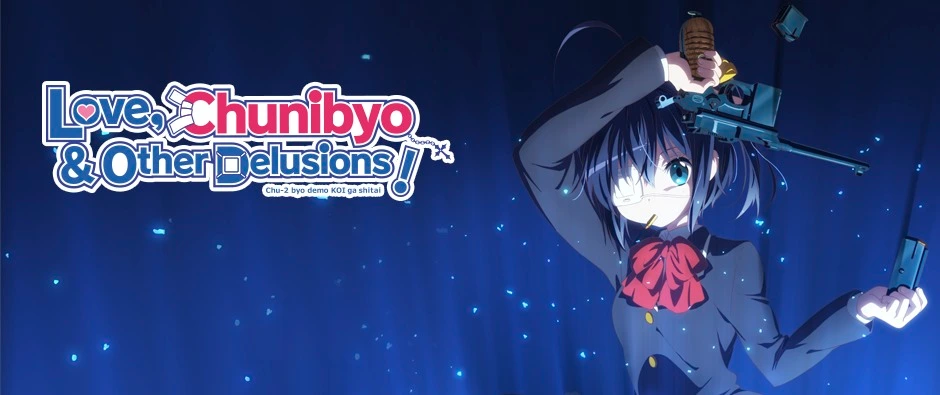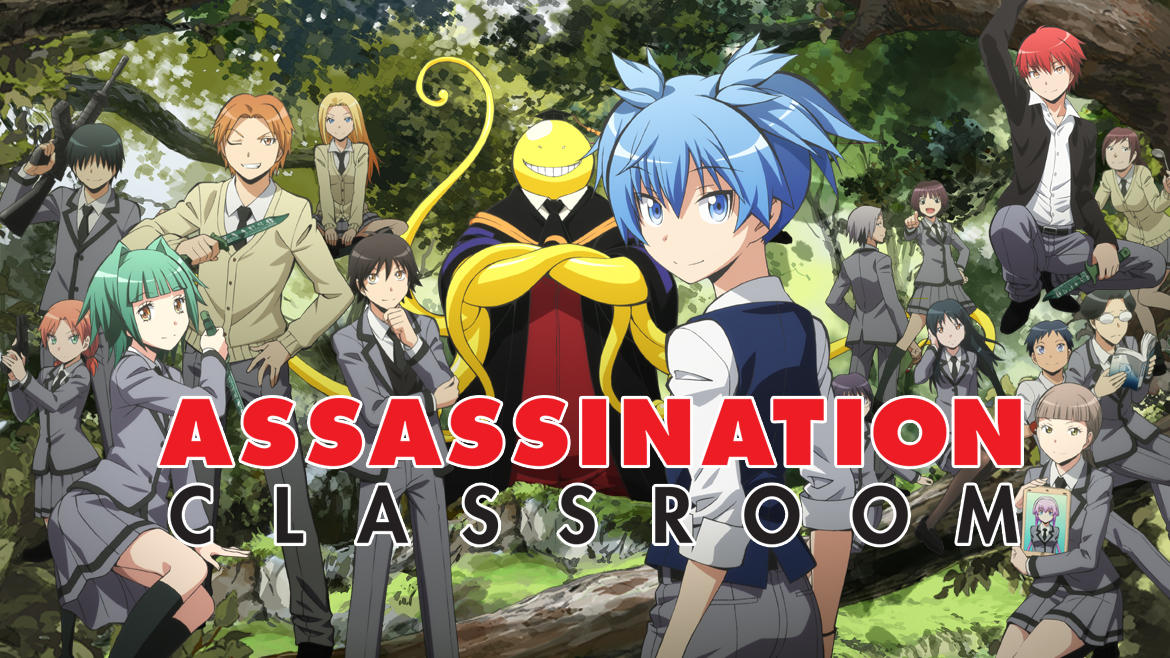Oh, come on, you’ve heard of this show, right? Even some friends who’ve never touched anime before at least knew about this show, if not even watched a few episodes themselves.
That being said… I was late to the party. I actually didn’t watch Attack on Titan in full until the January after the show came out (Jan. 2014). The biggest reason: I was actually going to watch it with a former college roommate, but… that ended up not happening. That’s part of a bigger story that’s too long to put here.
Second biggest reason: I’m lazy.
An Introduction
In an alternate-universe-type dealio, the history of humanity goes in a very different direction. Although at one point they lived around the entire world the same way we do here today, the human race in this universe found themselves being trapped by a bigger menace: the larger, humanoid-looking creatures called Titans. Titans have one purpose, and that only purpose alone, in life: to eat humans. And they’re pretty darn good at it.
Thus, all of humanity… well, what’s left of it, find themselves holed up within a giant, 150-foot-tall circular wall (with two more also-giant walls within it) to separate themselves from the monstrous Titans outside. It is in one of the cities on the outer edge of this wall where we meet our young main character, Eren… and, well, today’s not a good day for him.
After an argument with his parents, an even-more-giant Titan appears, looks over the wall, and then destroys it, letting Titans into the previously-protected city. Mass panic ensues! Caught up in the turmoil, Eren finds his mom under his now-collapsed house, but the small kid is too weak to lift the wreckage. Thus, he can do nothing but watch helplessly as a Titan comes by and eats his own mother.
On this day, humanity has learned a lesson. And on this day, Eren made a decision: all Titans must be killed!
The Plot and Characters
A decent amount of the first few episodes are focused on Eren and his two friends, Mikasa and Armin (I’ll describe them in a bit), joining the military and their training experiences. These episodes, although important for character development and introductions and such, feel a bit like a bore, and drag the show a little bit until we see them become late teenagers and begin to move beyond the training camp location at the end of episode 4. After this, the pace picks up and it becomes genuinely exciting… at least for a little while.
You see, Attack on Titan really is at its best when it’s doing its action sequences, or at least on the verge of action happening. You can almost feel the show relish in creating these large (and varying) battles between humans and Titans, and a lot of the plot twists and turns happen during these action-heavy episodes. Humans fly around with their super-cool omni-directional maneuver gear, and even though you see Titan after Titan be killed (or do the killing), every battle still does well to keep you enthralled.
On the few episodes that aren’t focused on that (such as episodes 1 through 4, and also episodes 14 through 16), that’s where Attack on Titan feels like it slogs down a bit. It’s not that these episodes are actually bad, and they’re still fairly important to the story. It just feels like the show itself is out of its element in these episodes though, and the pacing drags just a tad bit. (To be honest, though, once episode 14 rolls around, you’re already hooked.)
Speaking of plot twists, there’s some pretty big ones. For those of you going through Attack on Titan its first time, the twists and revelations that you’ll learn will really catch you off-guard throughout the whole show.
However, for those of you who are going through your second or so time around, I wouldn’t be surprised if you feel a little bit bored. You already know what the big twists are, and there’s little to no foreshadowing for them (although the show does foreshadow other things)… Not to say Attack on Titan isn’t worth multiple viewings, but it may not be quite as engrossing the second time around.
People like to say that Attack on Titan has a tendency to kill off characters, and so “you shouldn’t get attached to any of them”. To be honest, I don’t personally find that to be true. Most of the characters you meet by episode 4, you still see around on episode 25. That being said, you do see a lot of side characters dying (and sometimes the main characters, or the show, will get really caught up in them dying), but they’re more expendable, from a story-writing perspective.
When it comes to the show’s characters, I wouldn’t say they’re the most rounded. Although there are moments where they talk about things other than Titan killing, those scenes feel a bit more like an obligation to put in there, rather than the show actually trying to flesh out its cast. Like I said, Attack on Titan is best when it’s doing action, and with the cast we’re the most involved with, the Titans are definitely the biggest, if not only, thing on their minds. This doesn’t necessarily ruin the show for me, though, especially since I can’t say there isn’t any character development here, but more on their lives outside of being Titan-killing military soldiers would’ve been nice.
The cast members you’ll see the most include: headstrong Eren, who’s nothing if not a big bundle of passion; Mikasa, the “quiet but deadly” type who focuses almost all of her time on making sure Eren is okay; blonde-kid Armin, who actually grows a bit in his own right; and gruff Jean, who always looks angry and doesn’t hold back, but he is a man of respect.
All in all, Attack on Titan really is a fun show, and although I feel kind of bad for not jumping on the bandwagon and watching the show while it was airing, I am glad I was able to still experience it. Even if the other parts don’t shine quite as well, the amazing action makes this show worth the watch… but given its popularity, I feel it’s likely you’ve already seen it.
The Atmosphere
The look of the characters really stood out to me the first time I watched this series. With a second watch, I realized what it was that made them stick out: they used thick lines for the outlines. I really liked this move, actually; it’s a small change that makes this visual design distinct, and it just… feels right for this show. I don’t know why or how, but it does. Other than that, the character designs are really clean and nice, and relatively not-complex. I honestly really like how the characters are drawn and animated in this show.
Separate from the characters, there are also the Titans. The Titans look properly creepy, fleshy, and weird, but their appearance is most effective only when looking at them from a low camera (from about human eye level). Otherwise, they can sometimes come off as weirdly-shaped babies teetering around. That being said, I only find the design of the Colossal Titan okay; just a personal preference. The Titans with the weird face designs, like the oft-ridiculed “Moe Titan”, can really push you back out of the show, though; it’s funny, I guess, but I more think it feels out of place in this world.
The background designs are pretty good. The giant walls and the designs of the towns immediately give this anime a distinct look in its backgrounds as well. If we move away from those, though, the anime becomes a bit more standard in its look. This show is at its weakest when displaying large grass fields, as the fields just look so uninteresting. Obviously, the focus is on the Titans and characters moving around, but I feel that well-done backgrounds really helps with the visuals overall.
The music for this show, composed by Hiroyuki Sawano, is pretty darn awesome, I must say. There’s the standard orchestral instruments you’ll tend to hear, like the strings and the occasional brass, but the soundtrack also brings out the vocal choir quite a bit for those really dramatic moments. There’s also the more-than-occasional touch of electronic sounds too, which somehow just fits right for the scenes where they’re used. Although this was far from the first show Sawano composed for, I feel this show is what put him on the map for many Western fans.
You simply couldn’t not hear the first opening song for the show, even if you aren’t an action fan, while this show was airing; it was a pretty dang good song though. In comparison, the second opening sounded more like a national anthem, and while I was able to get used to it after a decent while, I still never liked it nearly as much as the first opening. Both ending songs, though, are fantastic in their own right, in my opinion.
I watched the show in Japanese, as there wasn’t even any news as to which company was doing the English dub at the time I watched the show. I would’ve half-expected Funimation to have picked up this show before it aired, but I suppose its popularity took them by surprise too. I feel the Japanese voice cast serviced the show pretty well, as well as Funimation’s English dub (or at least, what I’ve seen of it). You’ll be able to enjoy the show, regardless of the option you choose. However, one more note: in Funimation’s DVDs, the text during the cut-to-commercial frames weren’t translated, unfortunately, although Crunchyroll translated them for its streaming service. It’s disappointing, as there is some rather cool worldbuilding info in that text.
Final Remarks / TL;DR
Attack on Titan was the uber-popular action anime of 2013. There really was no escaping at least hearing about this show. Honestly, though, it’s pretty good; it has some rather interesting plot twists that you wouldn’t see coming (unless this isn’t your first time seeing it), and the action scenes really are super cool. It’s good that the action was as plentiful as it was in this series, too, because this show felt a tad out of its element in the episodes where that wasn’t the focus.
Watching this show is a no-brainer for anyone who like action, and frankly, if you’re an action anime fan, you’ve already seen this show. In fact, most everyone reading this review around the time its published probably already decided if this show was worth their time… I just wanna talk about it a bit though, okay? D: It’ll be interesting, though, to see the landscape 10 years from now, when new anime fans jump on and have never seen this show, and how they will perceive this show. (Honestly, it’ll probably be a similar situation to today’s anime fans’ relationship to Cowboy Bebop, the uber-popular sci-fi/action anime of 1998).
Rating: Great
Recommendation: Watch It
+++ action (this show lives and breathes it), distinct visuals in character designs and background art, soundtrack and ending themes
— show doesn’t perform as well on non-action episodes, characters are all focused on Titans and that’s it, may be a bit more boring during second viewing




